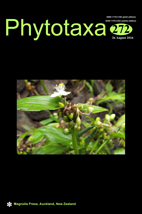Abstract
A study of the genetic relationships among Petrorhagia taxa from Turkey was carried out using inter-simple sequence repeat (ISSR) markers. A total of 409 amplified bands were obtained by 10 ISSR primers. The polymorphism ratio was high (100%) across 45 individuals representing nine Petrorhagia taxa (P. dubia, P. prolifera, P. pamphylica, P. peroninii, P. saxifraga, P. cretica, P. alpina subsp. alpina, P. alpina subsp. olympica, P. lycica) and was sufficient to distinguish each species. Statistical analyses were performed by using POPGENE, GenAlEx6, and PAUP. An unweighted pair-group method with arithmetic mean (UPGMA) dendrogram was constructed based on Nei’s genetic distance along with outgroup species (Velezia rigida) in MEGA4. The dendrogram shows two main clusters, the first one (Cluster-I) included only P. lycica, while the cluster-II contained all other taxa. Cluster-II can be grouped in two sub-clusters, with P. prolifera and P. saxifraga constituting a first sub-cluster, the other species (P. alpina subsp. alpina, P. alpina subsp. olympica, P. cretica, P. dubia, P. peroninii and P. pamphylica) being grouped in a second sub-cluster. Both PCoA and Neighbour-Net network analysis supported the dendrogram. The study showed that ISSR technique can be successfully used in species identification and determination of the genetic relationships between Petrorhagia species distributed in Turkey.

